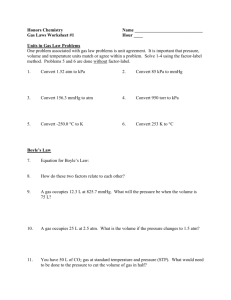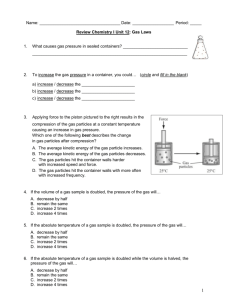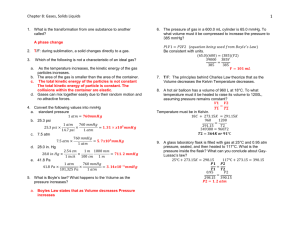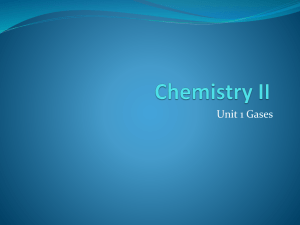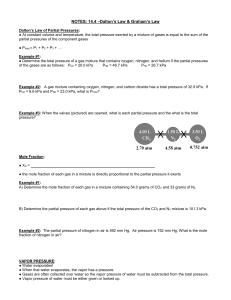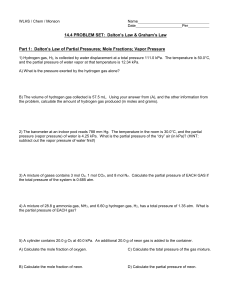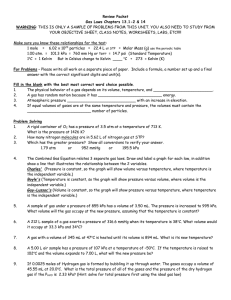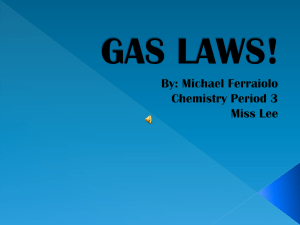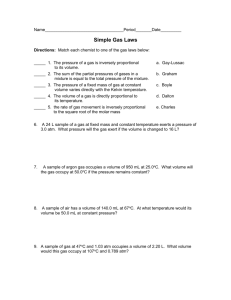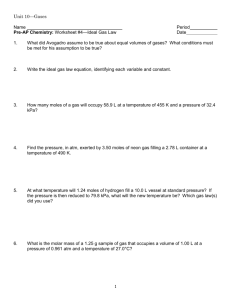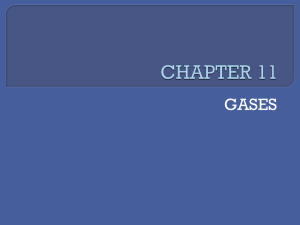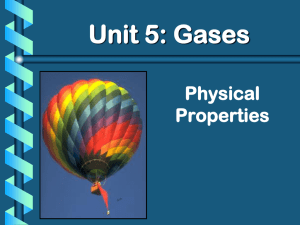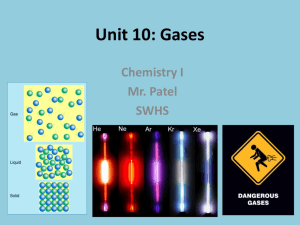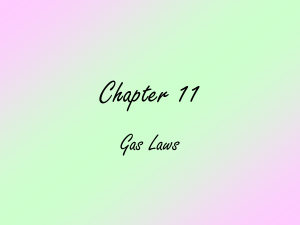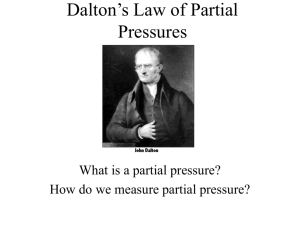Dalton's Law of Partial Pressures Worksheet - MHS Pre
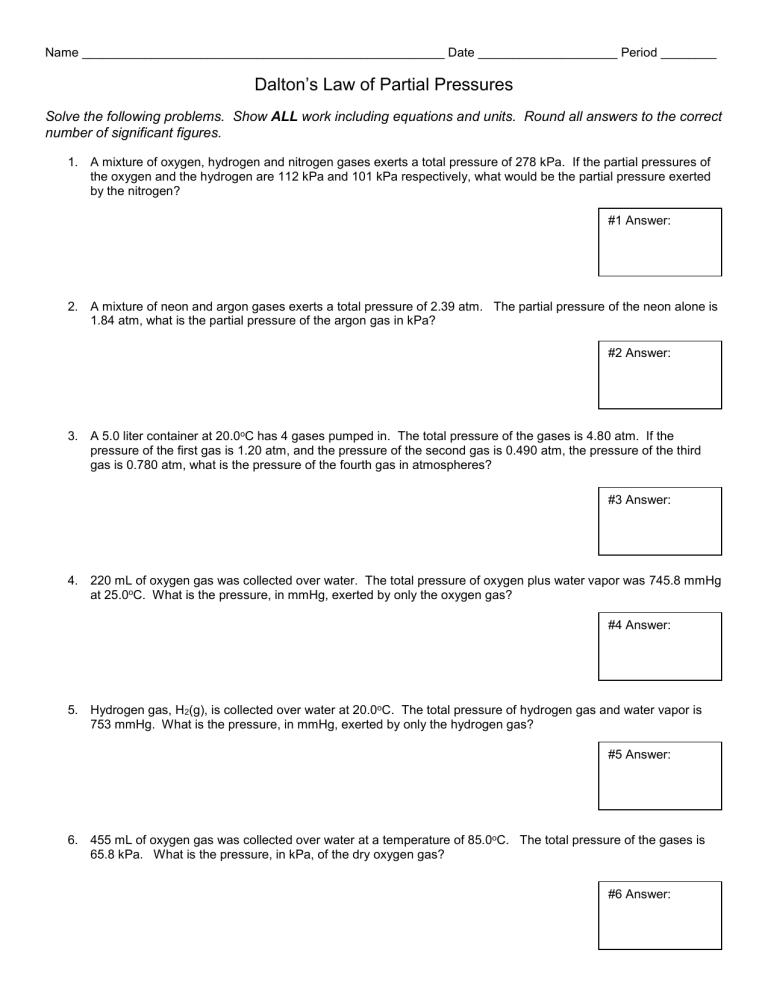
Name ____________________________________________________ Date ____________________ Period ________
Dalton’s Law of Partial Pressures
Solve the following problems. Show ALL work including equations and units. Round all answers to the correct number of significant figures.
1. A mixture of oxygen, hydrogen and nitrogen gases exerts a total pressure of 278 kPa. If the partial pressures of the oxygen and the hydrogen are 112 kPa and 101 kPa respectively, what would be the partial pressure exerted by the nitrogen?
#1 Answer:
2. A mixture of neon and argon gases exerts a total pressure of 2.39 atm. The partial pressure of the neon alone is
1.84 atm, what is the partial pressure of the argon gas in kPa?
#2 Answer:
3. A 5.0 liter container at 20.0
o C has 4 gases pumped in. The total pressure of the gases is 4.80 atm. If the pressure of the first gas is 1.20 atm, and the pressure of the second gas is 0.490 atm, the pressure of the third gas is 0.780 atm, what is the pressure of the fourth gas in atmospheres?
#3 Answer:
4. 220 mL of oxygen gas was collected over water. The total pressure of oxygen plus water vapor was 745.8 mmHg at 25.0
o C. What is the pressure, in mmHg, exerted by only the oxygen gas?
#4 Answer:
5. Hydrogen gas, H
2
(g), is collected over water at 20.0
o C. The total pressure of hydrogen gas and water vapor is
753 mmHg. What is the pressure, in mmHg, exerted by only the hydrogen gas?
#5 Answer:
6. 455 mL of oxygen gas was collected over water at a temperature of 85.0
o C. The total pressure of the gases is
65.8 kPa. What is the pressure, in kPa, of the dry oxygen gas?
#6 Answer:
Water Vapor Pressure Table:
Graham’s Law of Effusion
Solve the following problems. Show ALL work including equations and units. Round all answers to the correct number of significant figures.
7. Circle the molecule in each pair that diffuses faster. a. H
2
O or H
2
S b. NH
3
or H
2
O c. CO
2 or NO
2
8. Calculate the ratio of effusion rates of NO and NO
2
.
9. Calculate the ratio of effusion rates of Ar and Kr.
#8 Answer:
#9 Answer:
10. A sample of N
2
O effuses from a container in 42 seconds. How long will it take the same amount of I
2
to effuse from the same container under identical conditions?
#10 Answer:
11. Calculate the molar mass of a gas that effuses 2.5 times faster than carbon monoxide.
#11 Answer:


